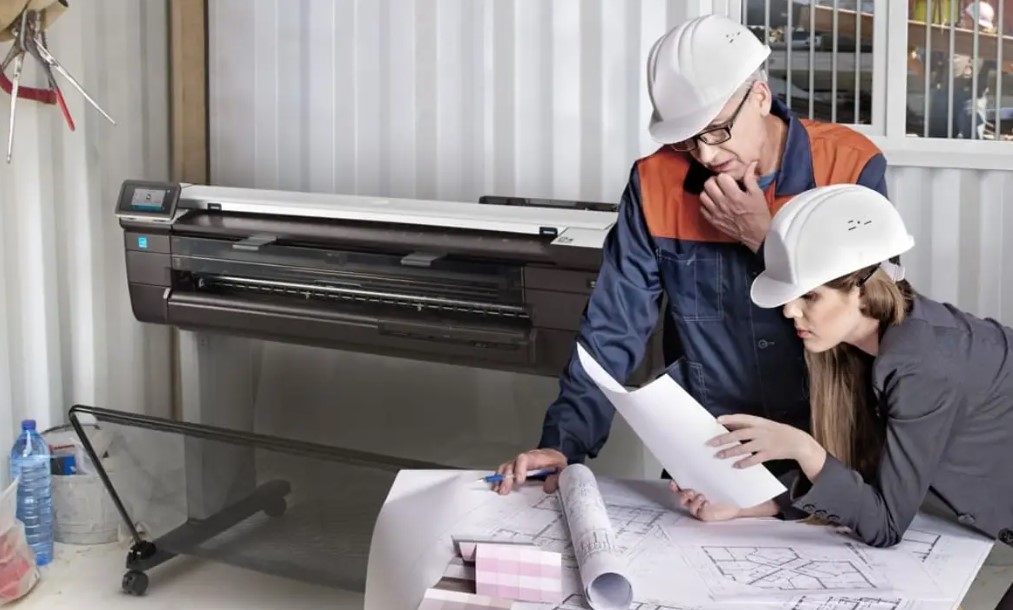In today’s digital landscape, large-format printers and scanners have become indispensable tools for various industries, including architecture, engineering, graphic design, and advertising. These devices empower professionals to bring their creative visions to life and streamline workflow processes. Choosing the right best large format scanner can be a little difficult task, given the multitude of options available on the market. This article provides a comprehensive guide to help you navigate the selection process effectively.
Understanding Your Needs
Before exploring the wide array of large-format printers and scanners available, it’s important to assess the specific requirements. Consider factors like the volume of printing and scanning you anticipate, the types of materials you’ll be working with, the desired print quality, and your budget constraints. By understanding your needs upfront, you’ll be better equipped to narrow your options and make an informed decision.
Print Quality and Resolution
One of the primary considerations when selecting a large-format printer is print quality and resolution. Resolution determines the levels of detail and clarity in your prints, measured in dots per inch (DPI)—higher DPI results in sharper images and text. Evaluate the printer’s DPI capabilities and ensure they align with your expectations, especially when dealing with intricate designs or photographs.
Media Compatibility
Another crucial aspect to consider is media compatibility. Large-format ones come with varying capabilities in terms of the types and sizes of media they can accommodate. Whether you need to print on standard paper, glossy photo paper, canvas, vinyl, or even textiles, ensure that the printers you choose support the materials you intend to work with. Additionally, consider the maximum print width the device offers, as it dictates the size of your projects. When searching for the best large format scanner, it’s imperative to ensure that it supports a wide range of media types and sizes to accommodate diverse printing needs.
Printing Speed
Efficiency is paramount in any professional setting, making printing speed a key factor. Evaluate the printer’s pages per minute (PPM) or square feet per hour (SFPH) specifications to gauge its printing speed. However, remember that faster printing speeds may come at the expense of print quality. Strike a balance between speed and quality that aligns with your specific requirements.
Ease of Use and Connectivity
User-friendliness and connectivity options are essential for seamless integration into your workflow. Look for large-format printers and scanners with intuitive interfaces, easy-to-navigate menus, and straightforward setup procedures. Additionally, connectivity features such as Wi-Fi, Ethernet, USB, and mobile printing capabilities, which enhance accessibility and convenience, especially in collaborative environments, should be considered.
Software Compatibility
Compatibility with design software is paramount, as it directly influences the ability to create and print projects efficiently. Ensure that your large-format printer and scanner are compatible with industry-standard design software such as Adobe Creative Suite, AutoCAD, SketchUp, and other specialised applications relevant to your field. Compatibility issues can disrupt workflows and hinder productivity, leading to delays and frustration. Thorough research into compatibility specifications and potential workarounds or limitations is crucial to avoid compatibility pitfalls. Additionally, consider future software updates and advancements to ensure continued compatibility and longevity of your printing and scanning equipment. By prioritising compatibility with your preferred design software, you can streamline the workflow and unleash your creative potential without unnecessary obstacles.
Cost Considerations
While upfront costs are undoubtedly a significant factor, it’s essential to consider the total cost of ownership over the printer’s lifespan. Evaluate ongoing expenses such as ink or toner cartridges, maintenance kits, and replacement parts. Additionally, energy consumption and operational costs are factors in determining the device’s long-term affordability. Opting for a reputable brand with a track record of reliability may entail higher initial costs but can ultimately result in lower total ownership costs and greater peace of mind.
Reliability and Support
Reliability is non-negotiable for large-format printers and scanners, as downtime can disrupt workflow and impact deadlines. Prioritise devices from trusted manufacturers known for their reliability and durability. Research the manufacturer’s customer support offerings, including warranties, technical assistance, and repair services. Prompt and reliable support can mitigate potential issues and ensure minimal disruption to your operations.
Environmental Considerations
In today’s environmentally conscious landscape, sustainability is crucial for businesses. When selecting a large-format printer and scanner, look for eco-friendly features such as Energy Star certification, eco-friendly ink or toner options, and recyclable components. Minimising environmental impact aligns with corporate social responsibility goals and can result in cost savings through reduced energy consumption and waste.
Conclusion
Selecting the right large-format printer and scanner is an important decision that can significantly impact your productivity, creativity, and bottom line. By carefully assessing the needs and considering factors such as print quality, media compatibility, printing speed, ease of use, software compatibility, cost considerations, reliability, and environmental considerations, one can make an informed choice that meets their specific requirements and sets you up for success in your professional endeavours.



